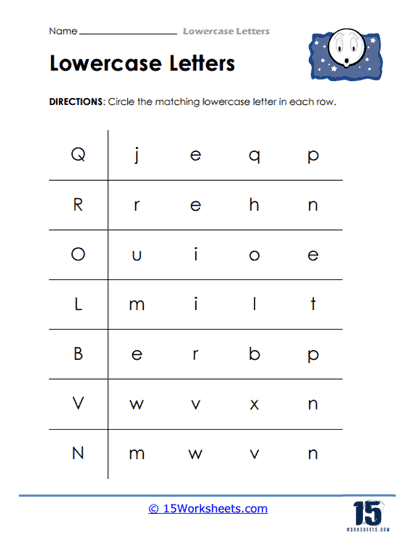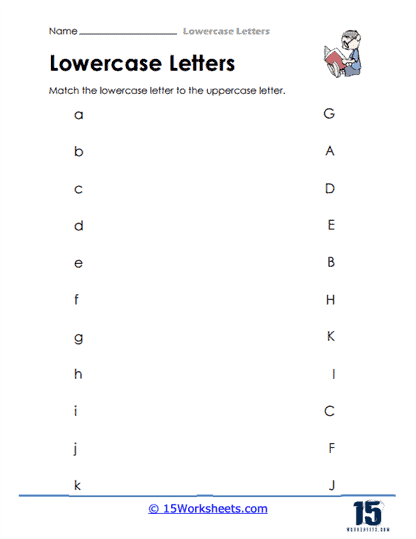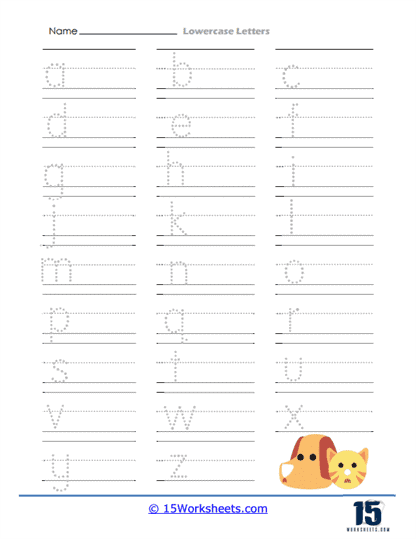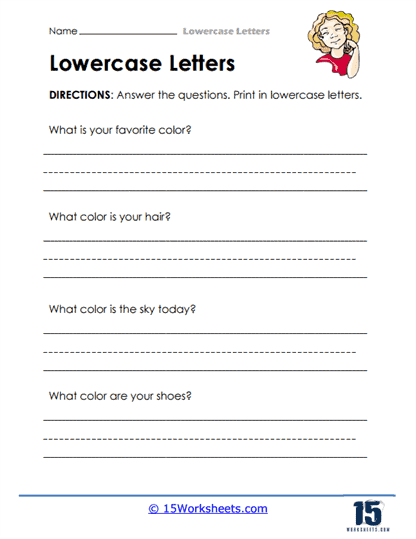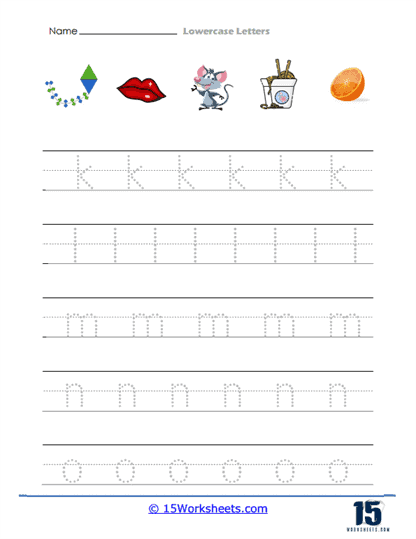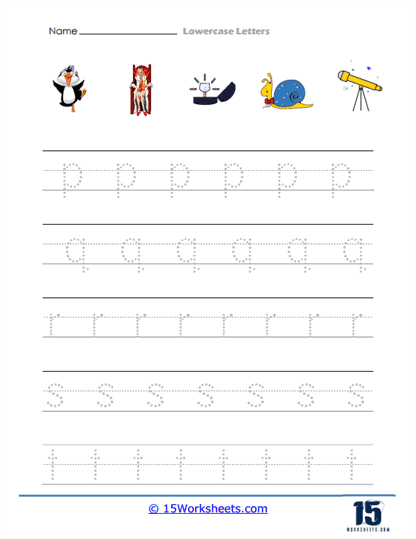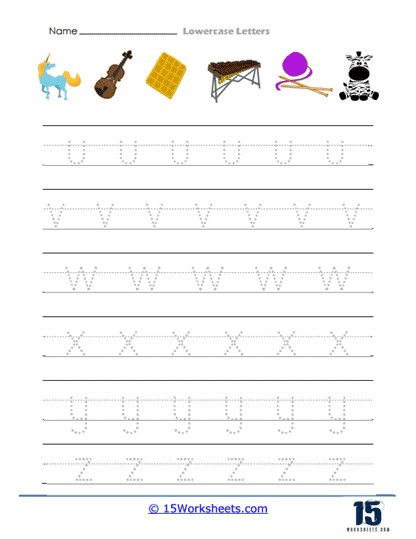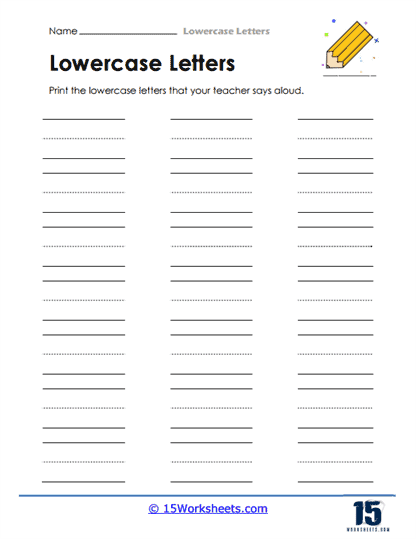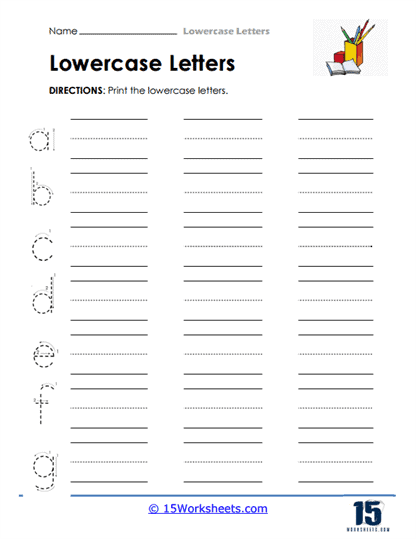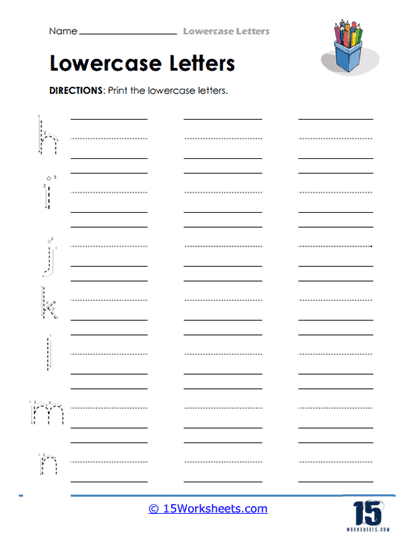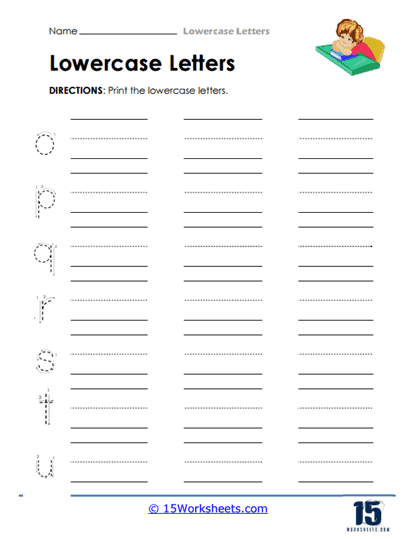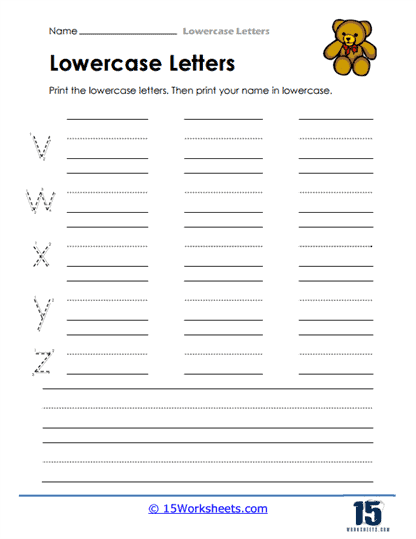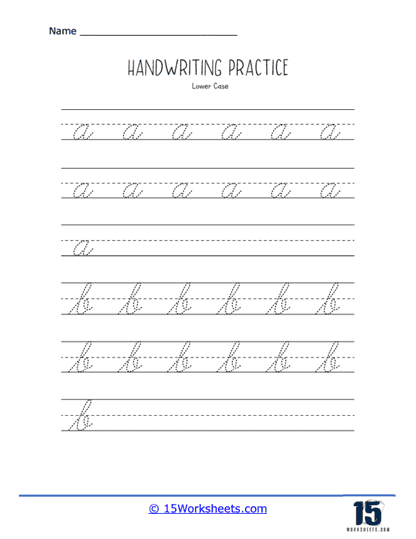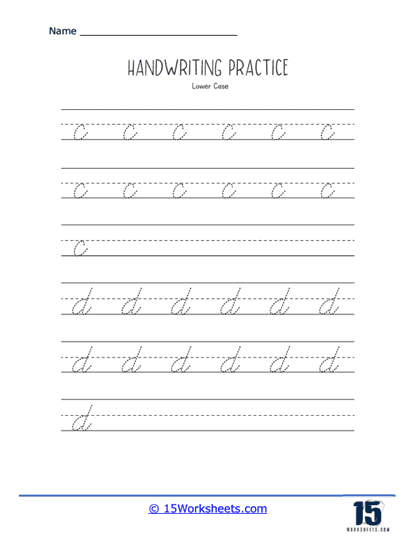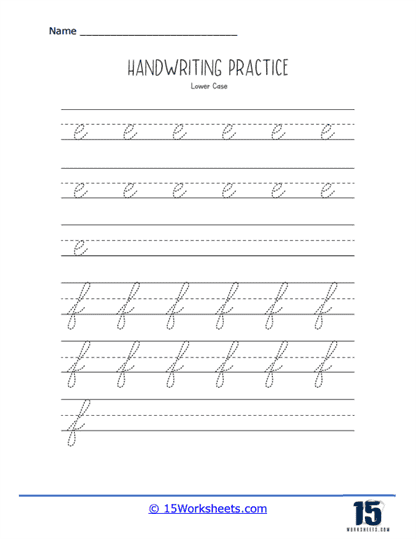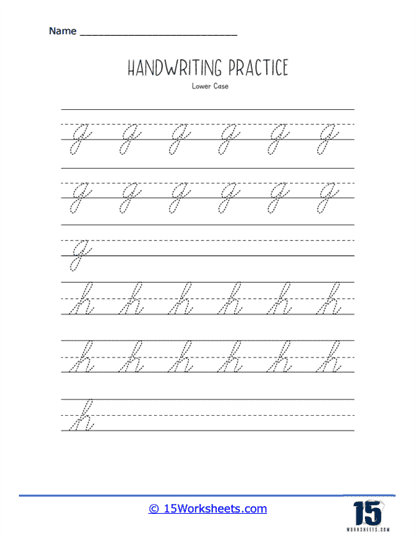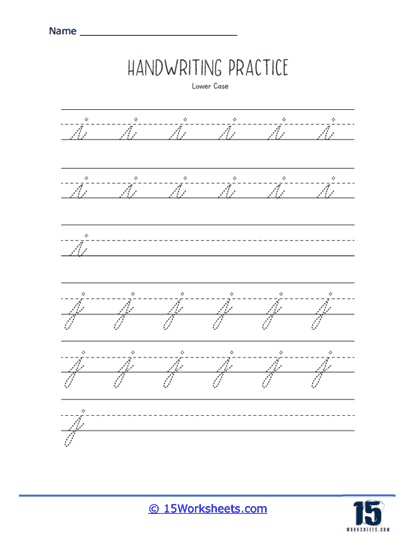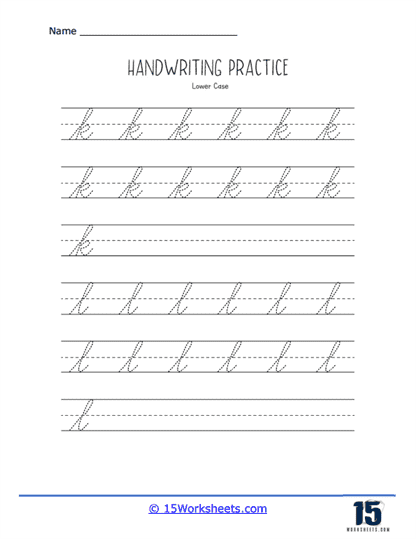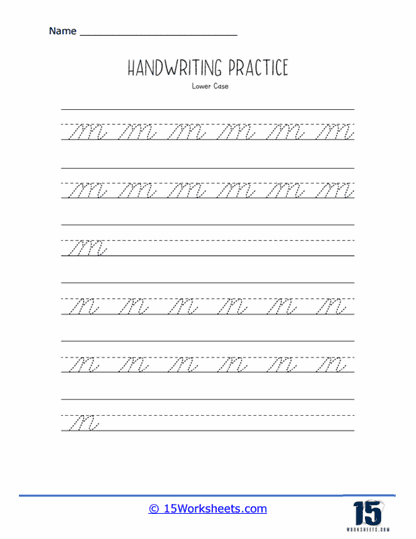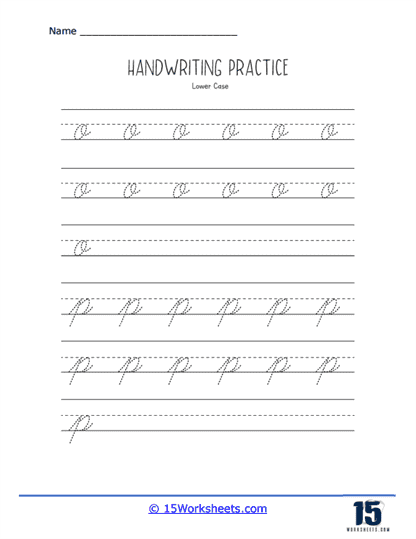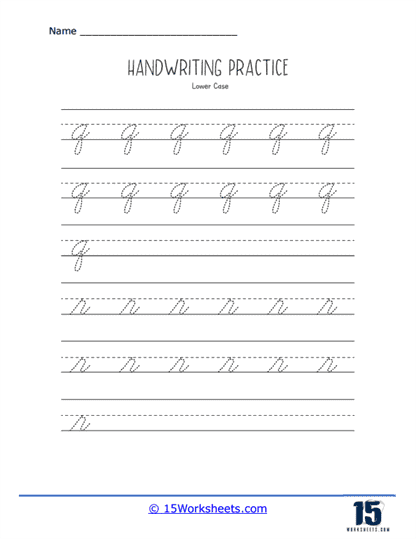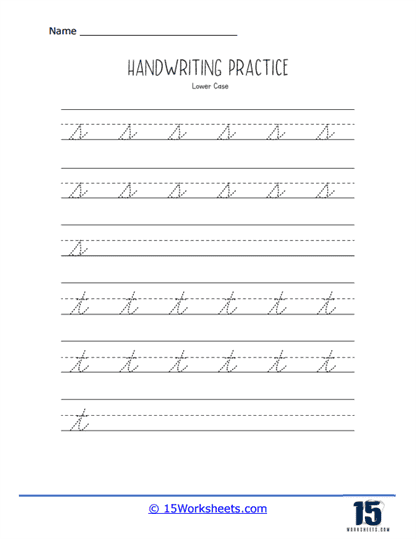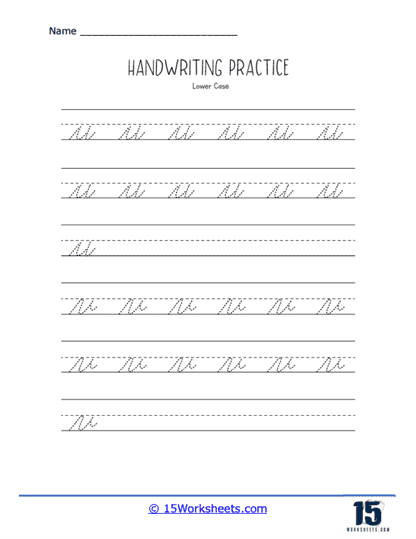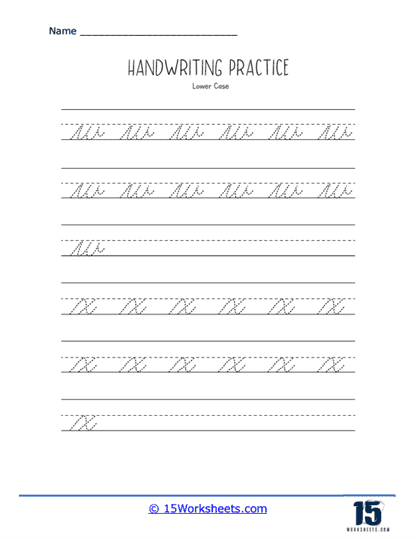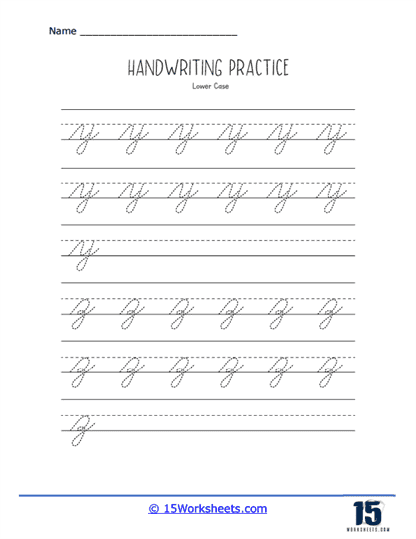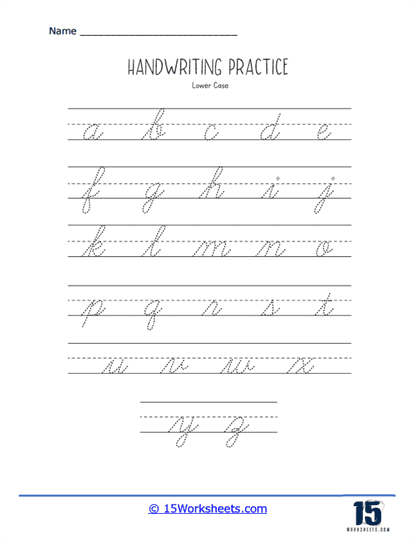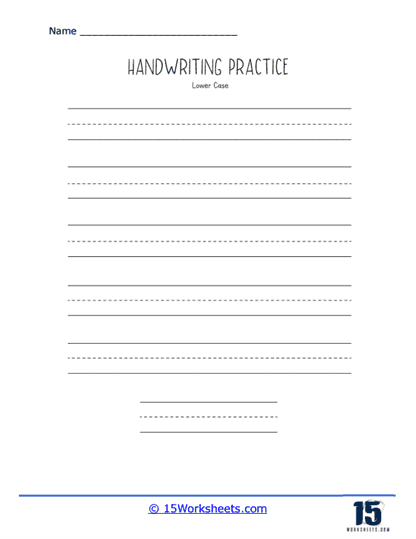Lowercase Worksheets
About These 15 Worksheets
These lowercase letter worksheets will help children learn and practice writing lowercase letters. These worksheets feature individual lowercase letters, and children can practice tracing, writing, and identifying lowercase letters. Each sheet provides traceable letter outlines and ample space for children to practice writing the letters on their own.
The worksheets include examples of each lowercase letter of the alphabet, starting from “a” and ending with “z.” The letters are often presented in a specific order that gradually introduces new shapes and strokes to the child. There are additional activities to reinforce letter recognition and formation, such as matching lowercase letters to corresponding pictures or completing simple words using the targeted letters. Lowercase worksheets are a useful tool for teaching letter recognition, letter formation, and fine motor skills to young children.
Lowercase worksheets can come in various formats, such as:
Tracing and Writing – Worksheets may feature individual lowercase letters with dotted lines that children can trace to practice letter formation. Children can also write the letters independently on the worksheet.
Letter Identification – Children may need to identify and circle specific lowercase letters or find all the occurrences of a given letter within a word or sentence. Lowercase worksheets help children recognize and differentiate lowercase letters from uppercase letters and other symbols. The worksheets often include examples of the target letter in various fonts and styles, allowing children to become familiar with its shape and appearance.
Phonics and Letter Sounds – Worksheets could require children to match pictures with the corresponding initial lowercase letter sound or identify the letter sound in given words.
Matching and Sorting – Children may be asked to match uppercase and lowercase letters or sort letters by specific criteria, such as by color or by letter formation.
Lowercase worksheets offer several benefits for children:
Letter Recognition – Learning lowercase letters helps children recognize and identify letters, which is essential for reading and writing.
Letter Formation – Tracing and writing letters helps develop fine motor skills, hand-eye coordination, and letter formation.
Vocabulary Development – Lowercase worksheets that incorporate pictures or words can help expand children’s vocabulary and improve their language skills.
Phonics – Practicing letter sounds and phonics activities helps children develop basic reading skills, including phonemic awareness and decoding.
Foundation for Learning – Practicing lowercase worksheets is essential for building a strong foundation in literacy skills, which are crucial for children’s success in various academic subjects.
Fine Motor Skills Development – Writing lowercase letters involves intricate movements and control of the hand and fingers. Lowercase worksheets can aid in the development of fine motor skills as children learn to manipulate writing utensils and produce the required letter shapes.
Lowercase worksheets are commonly used in preschools, kindergartens, and early elementary classrooms as part of literacy instruction. They can also be utilized in homeschooling settings or for additional practice at home to support children’s letter recognition and writing skills.


